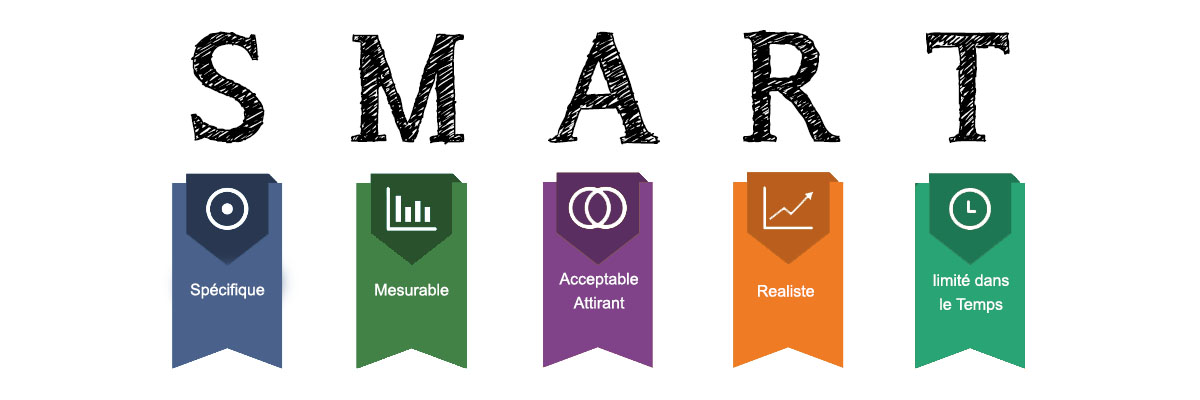January comes with the time of resolutions: to be more active, to spend more time with family and friends. I suggest you review the different criteria for setting good goals. Indeed, the best way to reach your goals is to have them well defined… The simplest technique is the SMART goal.

SMART is an acronym used to remember the characteristics of a good goal: Specific, Measurable, Attractive, Realistic and Time-bound. The SMARTEN-UP model adds 4 adjectives to verify the validity of the goal and confirm your ability and motivation to achieve the goal:
- Enthusiastic: Am I enthusiastic about moving towards this goal, do I want to go down this road?
- Natural: is this my goal? Did I choose it for myself? Am I under external pressure to achieve it?
- Understood: Have I shared my goal with a colleague or friend, what does she think? Does she agree? Will she support me? Did she understand why I chose it?
- Prepared: Am I ready for criticism? Do I have a plan B?
To apply the definition of a SMART goal, I suggest you work with this goal:
Process my emails faster and spend less time on them.
This (fairly classic) formulation of a goal does not give me the means to achieve it, because it lacks precision.
Characteristics of a SMART goal

Specific
The SMART goal must be specific. That is, it concerns a topic, a project, a person, a team. In the example, the objective concerns me personally, it is related to my work and specifically concerns one of the tools I use on a daily basis: emails. It is therefore already specific.
Measurable
One of the mottos of lean is thatyou can only improve what you measure. Indeed, how can I evaluate if I process my emails faster, without knowing the current response time? And when do I stop, do I have to answer my emails within a minute of receiving them? For my example, I could choose to respond in 24 hours and spend no more than two hours a day processing and following up on emails. I will choose these numbers based on the volume of email I handle, the other options available to me (phone, meetings…) and the urgency of the cases I am handling.
Acceptable or Attractive
If the SMART goal is set for a team or another person, they must accept it. This also applies to me: if I set a goal under pressure, chances are I won’t reach it. How to make a goal accepted? By making it attractive: it is easier to achieve positive goals than negative ones. It’s all about vocabulary. Which goal do you prefer:
- Reduce time spent on email by 15 minutes per day
- save 15 minutes a day on my emails to go for a walk
Realistic
Setting SMART goals requires knowing yourself or the person or team well. The goals must be realistic and consistent with my strengths and weaknesses. If my goal is too easy to achieve, I will not get any satisfaction from it. If it’s too high, I might get discouraged before I reach it.
In most cases, the goal is too ambitious. I suggest breaking the goal down into sub-goals with milestones. I can see my progress, or the team can measure its progress and set SMART goals at each step.
In my example, I could split my goal in two. Since I’m overwhelmed, I’m going to first tackle the time I spend on my emails every day. When I reach that goal, I will see how to respond in a shorter time frame. It is impossible to do everything right away.
Time bound
To finalize the SMART goal, I set a limit for myself. When do I want to reach my goal: in a month, six months, a year? If I don’t, there is a good chance that the goal will be the same next year.
My example of a SMART goal
I’m going to free up my work time by limiting the time I spend dealing with emails to two hours a day by May 15. Then I will improve customer satisfaction by responding to their messages within 24 hours by October 15.
Next step: Reaching my goal. And the best way to do that is to forget about it!
